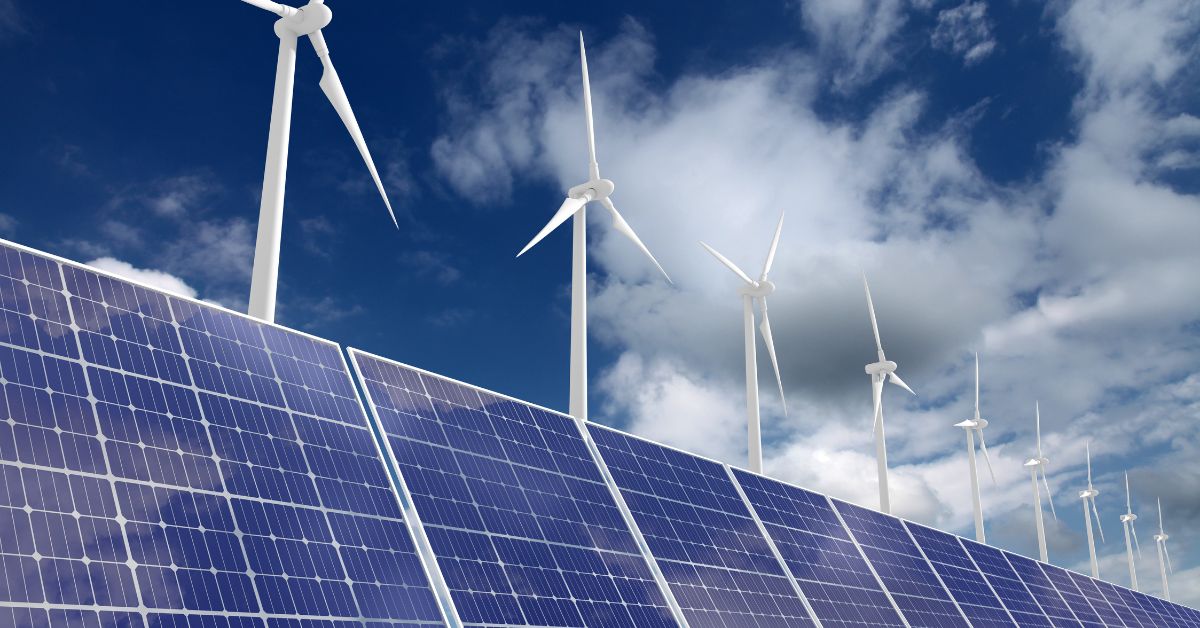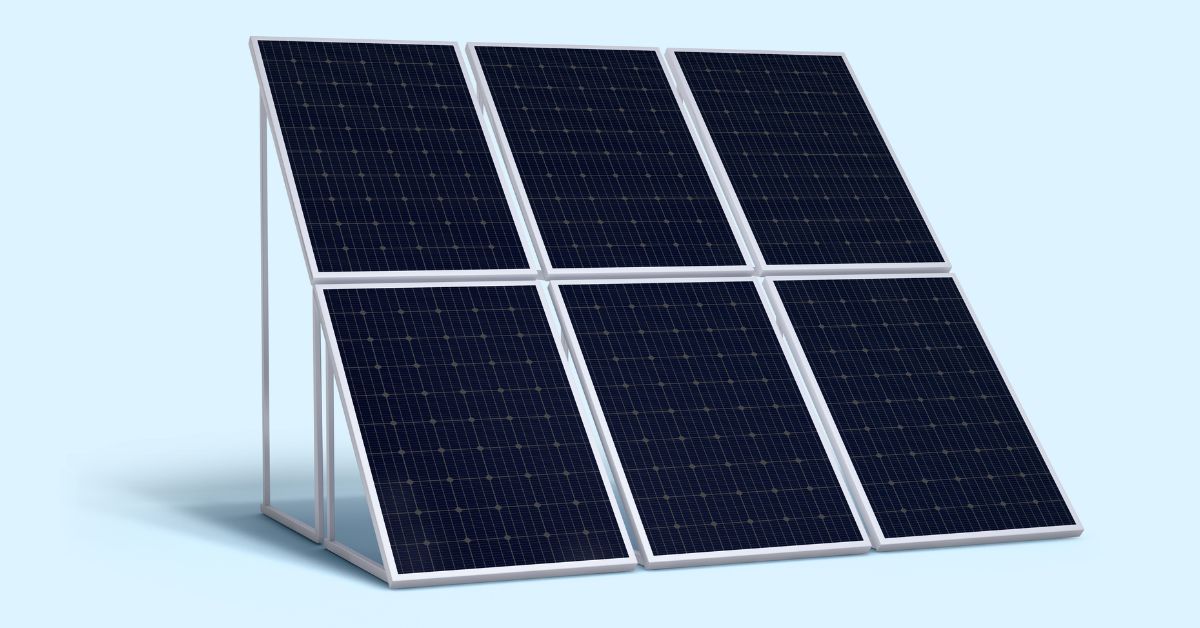Flexible Solar Panels
Flexible solar panels are lightweight, durable, and designed to bend or curve, making them ideal for non-flat surfaces like boats, RVs, and rooftops. Unlike rigid panels, they use thin-film photovoltaic materials, allowing them to be flexible without compromising efficiency.
Their portability and ease of installation make them perfect for outdoor enthusiasts or those seeking versatile, renewable energy solutions. With the ability to conform to various surfaces, they offer a sleek, unobtrusive appearance while providing reliable power. Flexible solar panels are also resistant to impact and weather, ensuring long-lasting performance in diverse environments where traditional panels might not fit.
Table of Contents
Flexible Solar Panels: The Future of Solar Energy
In a world where sustainability is becoming a priority, flexible solar panels are emerging as a game-changing technology. These panels, unlike their traditional rigid counterparts, offer a myriad of advantages that could revolutionize the solar energy industry. From their lightweight design to versatile applications, flexible solar panels are gaining traction in both residential and commercial sectors. This blog post will dive deep into the science, benefits, and potential of flexible solar panels, explaining how they work, where they can be used, and what future developments might look like.
Introduction: The Renewable Energy Revolution
The global energy landscape is undergoing a significant transformation. Fossil fuels, once the dominant source of energy, are being gradually replaced by renewable sources like wind, hydro, and solar power. Solar energy, in particular, has seen exponential growth over the last decade. As prices continue to drop and efficiency improves, solar panels are becoming a viable solution for homes, businesses, and even entire cities.

However traditional solar panels come with limitations. They are bulky, and heavy, and require specific conditions for installation. This is where flexible solar panels come into the play. They bring adaptability and innovation, allowing solar energy to be integrated into a wide range of surfaces, from clothing to rooftops to vehicles.
What Are Flexible Solar Panels?
At their core, flexible solar panels function the same way as traditional panels: they convert sunlight into electricity through the photovoltaic effect.
Traditional solar panels are typically made from silicon wafers, which are stiff and brittle. These wafers are placed inside glass or metal frames to provide protection and durability, but that comes at the cost of flexibility. On the other hand, flexible solar panels use thin layers of photovoltaic materials that can bend and curve without breaking.
The most common materials used in flexible solar panels include:
- Amorphous Silicon (a-Si): A thin-film technology that allows the production of flexible, durable solar cells.
- Cadmium Telluride (CdTe): Another thin-film material, known for its cost-effectiveness.
- Copper Indium Gallium Selenide (CIGS): A highly efficient material that can be deposited onto flexible substrates, making it one of the top contenders in the flexible solar panel market.
These materials can be placed onto various flexible substrates such as plastic, metal foil, or even fabric. This results in a panel that is much lighter and more versatile than traditional silicon-based panels.
How Do Flexible Solar Panels Work?
Flexible solar panels work similarly to traditional photovoltaic (PV) cells but with a few differences in their composition. Here’s a breakdown of how they operate:
- Absorption of Sunlight: Photons (particles of sunlight) hit the surface of the solar cell and are absorbed by the photovoltaic material, which could be any of the thin-film materials mentioned earlier.
- Generation of Charge Carriers: When photons are absorbed, they excite electrons in the material, knocking them loose and creating free electrons and holes (positively charged gaps).
- Separation of Charges: An electric field within the solar cell causes these free electrons and holes to move in opposite directions, creating a current.
- Flow of Electricity: The movement of these charge carriers generates a flow of electricity, which can then be captured and used to power devices or stored in batteries.
The overall process is the same for flexible solar panels, but their lightweight, flexible nature allows them to be installed in places where traditional solar panels can’t be used.
Advantages of Flexible Solar Panels
Flexible solar panels offer several benefits over their rigid counterparts. Below are some key advantages that make them an attractive option for various applications:
- Portability: One of the most significant advantages of flexible solar panels is their lightweight and portable nature. Traditional solar panels are often too cumbersome to move around easily. However, flexible panels can be rolled up or folded, making them ideal for activities like camping, hiking, or any off-grid situation. They are especially useful for powering small devices in remote areas.
- Versatility in Applications: Because flexible solar panels can conform to a variety of surfaces, they open up new possibilities for solar energy use. They can be applied to curved surfaces like boats, RVs, vehicles, or even backpacks. Some innovative applications include solar-powered tents and clothing, making renewable energy more accessible in everyday life.
- Lightweight: Traditional solar panels often require strong structural support due to their weight. This can limit their use on certain rooftops or buildings that cannot handle the additional load. Flexible solar panels, on the other hand, are extremely light, enabling their use on delicate structures like mobile homes, sheds, and even tents.
- Durability and Resilience: While traditional solar panels can crack or break if mishandled, flexible solar panels are designed to withstand rougher conditions. Their flexibility means they are more resistant to physical stress, such as bending or impact, which can be an issue for fixed panels in areas with extreme weather conditions.
- Easy Installation: Because they are lightweight and flexible, these solar panels are easier to install. You don’t need complex mounting systems or professional installation services. In some cases, they can even be attached using adhesive, reducing both the time and cost of installation.
- Lower Cost (in Some Cases): While the cost of flexible solar panels can vary depending on the material used and the brand, they can sometimes be cheaper than traditional solar panels due to lower material and production costs. Especially for smaller-scale projects or portable applications, flexible solar panels offer a more cost-effective solution.
- Aesthetic Appeal: Traditional solar panels can be unsightly, particularly when installed on residential homes. They often require mounting systems that protrude from roofs, which some homeowners find unattractive. Flexible solar panels, on the other hand, can lay flat against surfaces, blending in more seamlessly with the architecture of a building.
Challenges and Limitations
While flexible solar panels offer many advantages, they also come with a few drawbacks:

- Lower Efficiency: One of the main downsides of flexible solar panels is that they tend to have a lower energy conversion efficiency than rigid silicon-based panels. The thin-film materials used in flexible panels typically have lower efficiency ratings, meaning they generate less electricity per square meter compared to traditional panels. For those with limited space, this could be a significant disadvantage.
- Shorter Lifespan: Flexible solar panels may not last as long as their traditional counterparts. Rigid silicon panels can have lifespans of 25 years or more, whereas flexible panels typically have shorter lifespans. This is partly due to the materials used and their exposure to more wear and tear in some applications.
- Temperature Sensitivity: Flexible solar panels can be more sensitive to high temperatures. While they perform well in mild conditions, extreme heat can degrade their performance over time, leading to a drop in efficiency.
- Cost for High-Efficiency Models: Although flexible solar panels can sometimes be cheaper, this is not always the case. High-efficiency models, particularly those using CIGS or other advanced materials, can be more expensive than traditional silicon-based panels.
Applications of Flexible Solar Panels
Flexible solar panels can be used in a wide variety of applications that traditional panels cannot accommodate due to their rigid nature. Some of the most exciting and innovative uses include:
- Portable Solar Chargers: Flexible solar panels are ideal for portable solar chargers used to power small electronics like phones, cameras, and laptops. Because they can be folded and carried easily, they are perfect for outdoor enthusiasts, travelers, or those living off the grid.
- Wearable Solar Technology: Imagine a jacket that charges your phone or a backpack that powers your tablet. Wearable technology is a rapidly growing field, and flexible solar panels are leading the way. Lightweight and durable, these panels can be integrated into clothing, backpacks, or other wearable items.
- Transportation Applications: Flexible solar panels are finding use in various forms of transportation, including boats, RVs, buses, and even cars. They can be installed on curved surfaces and used to power everything from onboard electronics to the entire vehicle.
- Building Integrated Photovoltaics (BIPV): Flexible solar panels can be integrated into building materials like windows, walls, or roofs. This application, known as Building Integrated Photovoltaics (BIPV), allows buildings to generate their electricity without the need for traditional solar panel installations.
- Agricultural Uses: Flexible solar panels can be used in agriculture to power sensors, irrigation systems, or other equipment in remote areas. Their lightweight design makes them easy to install in various locations without disturbing the landscape.
- Disaster Relief and Humanitarian Aid: In disaster-stricken areas where power grids may be down, flexible solar panels can provide an immediate source of electricity. Their portability and ease of deployment make them ideal for emergencies.
The Future of Flexible Solar Panels
The future of flexible solar panels is incredibly promising. As technology advances, we can expect significant improvements in both efficiency and cost. Here are some trends and developments to watch for:

- Increased Efficiency: Researchers are continuously working on improving the efficiency of thin-film solar technologies. Advances in materials science, such as the development of new organic photovoltaic materials, could lead to flexible panels with efficiency levels comparable to traditional silicon panels.
- Hybrid Systems: One exciting possibility is the integration of flexible solar panels with other renewable energy systems, such as wind or hydropower. These hybrid systems could offer more reliable energy generation, particularly in off-grid applications.
- Advanced Manufacturing Techniques: New manufacturing techniques, such as roll-to-roll processing, could significantly reduce the cost of producing flexible solar panels. This would make them more accessible to consumers and businesses alike.
- Innovative Designs: As the technology matures, we may see flexible solar panels integrated into a wider variety of products. Imagine solar-powered cars, drones, or even airplanes. The possibilities are nearly endless.
- Environmental Benefits: The production of flexible solar panels typically requires less energy and fewer raw materials than traditional panels, making them a more environmentally friendly option. As demand for sustainable energy solutions grows, this could become a major selling point.
FAQs About Flexible Solar Panels
Q1. What are flexible solar panels, and how do they differ from traditional solar panels?
Flexible solar panels are made from thin-film materials, allowing them to be lightweight and bendable. Unlike traditional rigid panels made from silicon, flexible panels can be installed on curved surfaces and are typically more portable.
Q2. How efficient are flexible solar panels compared to rigid solar panels?
Flexible solar panels generally have a lower efficiency rate, ranging from 10-17%, compared to rigid silicon panels that can reach 20-23%. However, their portability and flexibility make them ideal for certain applications, despite their lower efficiency.
Q3. Where can flexible solar panels be used?
Flexible solar panels are ideal for RVs, boats, camping gear, off-grid applications, and curved rooftops. They can be used on surfaces that may not support traditional panels and are perfect for portable energy solutions.
Q4. Are flexible solar panels durable?
While they are designed to be more resilient against physical impact and stress due to their flexibility, flexible solar panels tend to have a shorter lifespan (10-15 years) compared to traditional panels (20-30 years). They are also more susceptible to environmental degradation, like UV damage.
Q5. How much power can a flexible solar panel generate?
The power output depends on the size and efficiency of the panel. For example, a typical 100-watt flexible solar panel can generate about 100 watts per hour under optimal sunlight, though this may vary depending on environmental factors.
Q6. How do I install flexible solar panels?
Installation is relatively simple due to its lightweight nature. Many come with adhesive backing, which allows for easy mounting on flat or curved surfaces without additional brackets. They can also be attached with screws or velcro for more secure installations.
Q7. Are flexible solar panels waterproof?
Most flexible solar panels are designed to be weather-resistant and can withstand exposure to rain and snow. However, it’s essential to check the manufacturer’s specifications for water resistance levels to ensure proper outdoor usage.
Q8. Can flexible solar panels charge batteries?
Yes, flexible solar panels can charge batteries, especially in off-grid setups. You can use a solar charge controller to regulate the power flowing from the panel to the battery, preventing overcharging.
Q9. How portable are flexible solar panels?
Due to their lightweight and flexible structure, these panels are incredibly portable. Many are foldable or can be rolled up, making them ideal for use on the go, such as for camping trips, RVs, or hiking.
Q10. Are flexible solar panels cost-effective?
Flexible solar panels are generally more expensive per watt than traditional rigid panels. However, they offer cost savings in certain situations, such as for lightweight applications or installations where rigid panels are not feasible.
A Bright Future Ahead
Flexible solar panels represent an exciting frontier in renewable energy technology. Their unique characteristics — lightweight, portable, durable, and adaptable — make them ideal for a wide range of applications, from powering wearable devices to enabling off-grid living. Although they currently have lower efficiency compared to traditional silicon-based panels, ongoing research and development could soon close that gap, making flexible solar panels a crucial part of the global transition to clean energy.
As the world continues to prioritize sustainability, flexible solar panels have the potential to play a significant role in reducing our dependence on fossil fuels and creating a more resilient, decentralized energy grid. Whether you’re a homeowner looking to reduce energy costs or an adventurer seeking portable power solutions, flexible solar panels offer a glimpse of the future of solar energy — one that’s adaptable, versatile, and full of possibilities.
Conclusion of Flexible Solar Panels
Flexible solar panels represent a significant advancement in solar technology, offering a versatile solution to meet the growing energy demands of our modern world. Their lightweight, portable design allows for easy integration into a variety of applications, from powering electronic devices to being incorporated into building materials.
This adaptability not only enhances energy efficiency but also promotes sustainable practices by enabling solar energy utilization in locations previously deemed unsuitable for traditional panels. Furthermore, ongoing advancements in materials and manufacturing processes promise to improve their efficiency and reduce costs, making flexible solar panels an increasingly viable option for both consumers and businesses. As the global push for renewable energy sources intensifies, flexible solar panels stand out as a promising technology that can help bridge the gap between convenience and sustainability, paving the way for a cleaner, more energy-efficient future. Embracing this innovation could play a crucial role in our transition to a greener planet.
Click here to learn more about Flexible Solar Panels
Click here to learn more about Types of Commercial Solar Panels

